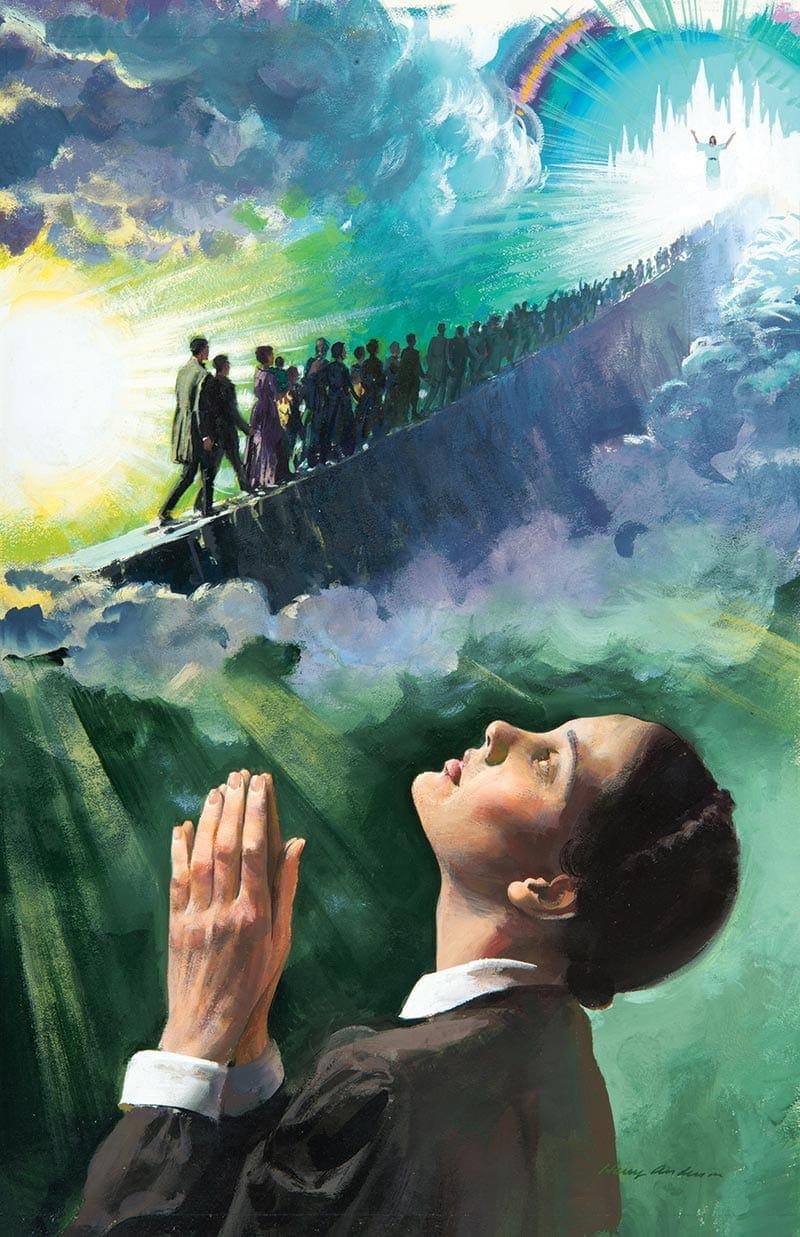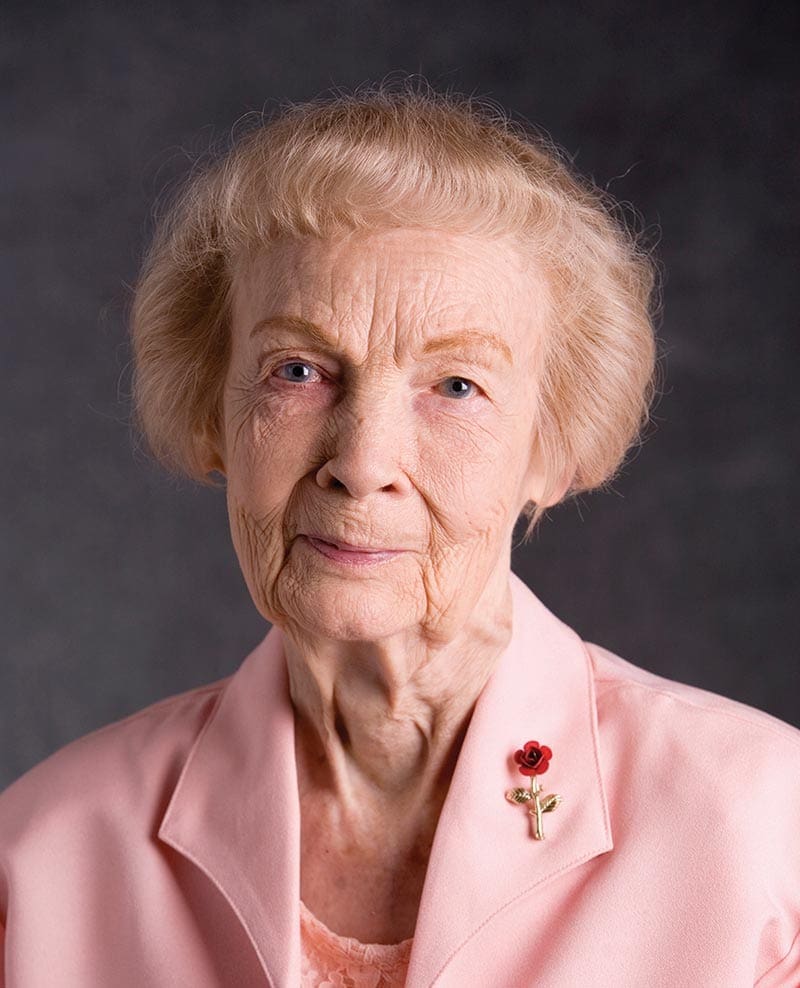
The following list prioritizes names—over times, events, and issues. It highlights people deserving of memory, women who have given their God and His church their efforts and abilities. It omits many names that should be listed—our deepest apologies. It acknowledges service to God in a way that may blur some person’s lines of definition of ministry. It gives people first place, paying only secondary attention to venerated terms and trends that often absorb focus. Nevertheless, it honors all those servants of God who inspired the psalmist’s thrilled exclamation at the mighty host of women who proclaim the Lord’s Word (Ps. 68:11).
Ellen Harmon, age 17, receives her first vision and commences a 70-year public ministry
Annie Smith serves as acting editor of the Advent Review and Sabbath Herald when James and Ellen White travel in ministry.
Prominent male voices encourage women’s public ministry, including James White, Uriah Smith, D. Hewitt, J. A. Mowatt, J. H. Waggoner, J. N. Andrews, and G. C. Tenney.
Hannah More, convert to Seventh-day Adventism, wins converts and plants churches on West African coast.
Sarah A. Hallock Lindsey, Ellen S. Edmonds Lane: first Adventist women evangelists (Lindsey in meetings in New York State with her husband, John; Lane with her husband, Elbert).
Adelia Patten Van Horn, first female General Conference (GC) treasurer, serves through 1873.
Sarah A. Hallock Lindsey: first woman licensed as a minister, recognized for her effective evangelism.
Fredricka House Sisley, second female General Conference treasurer (1875-1876).
Minerva Jane Loughborough Chapman, third female General Conference treasurer (1877-1883); subsequently, editor, Youth’s Instructor.
Ellen S. Edmonds Lane, evangelist [see above on 1868], is licensed as a minister (1878-1889), serving in Michigan, Ohio, Indiana, Virginia, and Tennessee.
Julia A. Owen, licensed minister with Kentucky-Tennessee Conference (1878-1895).
Ruie Hill, Hattie Enoch, of Kansas; Ellen S. Edmonds Lane,Julia Owen, of Michigan; Anna M. Johnson, Libbie Collins, of Minnesota, listed in second Yearbook as female licensed ministers.
Ida. W. Hibben, of Illinois, serves as a licensed minister. Hattie Enoch licensed in Wisconsin.
Ruie Hill licensed in Alabama/Mississippi. Julia Owen moves to California and continues her licensed ministry.
L. Flora Plummer elected secretary of the Iowa Conference; first woman known to have served as acting conference president (when Clarence Santee was called to California in 1900).
Helen May Stanton Williams, licensed 1897-1914; serves as pastor and evangelist in the United States and South Africa.
Sarepta M. I. Henry receives ministerial licensefrom General Conference; outlines plans for a “woman ministry” in four-page supplement of the Review and Herald. She travels and speaks widely in the denomination; the Review prints her weekly feature for women.
Edith Bartlett serves as a licensed minister in the British Conference.
Sarepta M. I. Henry tells GC delegates of the need for a women’s ministry; urges women first to serve in the home as Christian mothers and wives, and then to minister to others within their sphere of influence.
Anna Knight, daughter of an emancipated slave, invited to serve as delegate to General Conference Session in Battle Creek, Michigan; subsequently becomes first Black woman missionary to India.
Minnie Day Sype Atteberry Crippin, licensed as Adventist minister until 1956, raises up churches in the Oklahoma Territory, Iowa, Washington State, Florida, and the Bahamas, at times performing marriages and baptisms.
Alma Bjugg, captain in the Salvation Army, converts to Adventism, becomes first native ministerial worker in Finland; receives ministerial license.
L. Flora Plummer leads GC Sabbath School Department until 1936.
Anna Knight serves as associate home missionary secretary for the Southeastern (now Southern) Union, overseeing the work in Black churches and schools in the Carolinas, Georgia, Tennessee, and Florida.
Helen Williams returns from South Africa; directs Bible Worker training program at Washington Missionary College; pastors small church in Washington, D.C.
Ellen G. White dies on July 16. Seventh-day Adventist Encyclopedia describes her as “cofounder of the Seventh-day Adventist Church, writer, lecturer, and counselor to the church who possessed what Adventists have accepted as the prophetic gift described in the Bible.”
Louise Kleuser pastors churches in New Haven, Connecticut.
Mabel Vreeland graduates with Bible instructor degree from Atlantic Union College, begins 42-year career as Bible instructor, upstate New York, including 10 years of pastoring High Banks, Saranac Lake, and Chateaugay churches.
Mary Walsh, evangelist in New England, licensed as minister until 1981, when no longer allowed to carry the credential.
Maybelle Vandermark [Goransson] graduates with ministerial degree, serves in Potomac Conference; following year, becomes sole pastor in a district of Virginia, 1933-1935; then teaches Bible at Washington Missionary College, 1940-1952.; MA (Archaeology), 1949.
Jessie Weiss Curtis receives license as Adventist minister, raises up several churches in Pennsylvania; oversees ministerial interns until 1972.
Madelynn Jones [Haldeman] graduates with theology degree from Columbia Union College; 1949, MA in systematic theology and biblical languages. Goes on to serve at La Sierra University, 1966-1997, as New Testament scholar.
Ida Matilainen begins 40 years of evangelistic efforts in Kainuu region of Finland near Arctic Circle.
Lucille Harper [Knapp] graduates with MA in biblical languages; first woman sponsored to attend the Seminary (North Pacific Union). She later joins religion faculty of Walla Walla College, teaching Hebrew and Greek to generations of ministerial students.
Leona G. Running graduates with MA in Greek and Hebrew from Seventh-day Adventist Theological Seminary; joins Seminary as first female faculty member; later earns PhD (Ancient Near Eastern Studies) from Johns Hopkins University; teaches courses in Greek, Hebrew, Egyptian, Akkadian, Syriac, and Aramaic until retirement in 2002, training generations of Adventism’s spiritual, administrative, and academic leaders; serves on editorial team of scholarly theological journal Andrews University Seminary Studies from 1963 until her death in 2014.
Margarete Prange, theology degree; copastors Adventist church in Germany (1970-1976); then sole pastor, Galsenkirchen, Bottrop, Gladbeck, and Dorsten churches, East Germany.
Josephine Benton assumes pastoral duties, Sligo church, serving there until 1979; later, sole pastor, Rockville, Maryland, Adventist Church, 1979-1982.
Mrs. W. H. Anderson (Central Union), Mary E. Walsh (Pacific Union), and Josephine Benton (Potomac Conference) among the last women listed in the Yearbook as having ministerial licenses.
Frances Osborne, first certified Adventist woman chaplain.
Jocelyn Fay, first woman to serve as assistant editor, Adventist Review.
Margit Suring, of Finland, first Adventist woman to earn ThD from Seventh-day Adventist Theological Seminary.
Walla Walla theology graduates
Becky Lacy and Collette Crowell become first woman pastors sponsored for MDiv degrees by their respective conferences (Southeastern California and Upper Columbia) at Seventh-day Adventist Theological Seminary.
Lang Van teaches Bible to Cambodian refugees in Thailand; pastors Cambodians in France; moves to California to pastor refugees.
Olive Hemmings, theology lecturer, West Indies College [now Northern Caribbean University], Mandeville, Jamaica; later, PhD (Theology, Ethics, and Culture); continues till present as Adventist educator, training pastors at Washington Adventist University.
Helen Tyler, second Adventist woman certified as a fellow in the College of Chaplains.
Sally Kiasiong Andriamiarisoa, associate pastor in Mauritius.
Yvonne Øster becomes church pastor in Lintioping, Sweden.
Adventist Review publishes its first “AR Seminar,” focusing on women in early Adventism, including reprints of articles defending women’s public roles by James White and J. N. Andrews.
Hui Ying Zhou, Chinese pastor, baptizes at least 200 in Wuxi, China; attracts up to 1,000 to Sabbath services.
Hyveth Williams, associate pastor at Sligo church, becomes first Black woman to serve as sole pastor—Boston Temple, Massachusetts; goes on to earn doctorate, teach at Seventh-day Adventist Theological Seminary, direct Doctor of Ministry program until present.
Karen Flowers, GC Women’s Advisory coordinator, identifies 1,872 women working as administrators, departmental directors and associates, pastors, chaplains, and Bible instructors.
Rosa Taylor Banks, first female general field secretary, GC.
Esther R. Knott joins pastoral staff of Sligo church, 1990-1997; later associate pastor, Pioneer Memorial church; currently associate director of the North American Division (NAD) Ministerial Association.
Lisa Smith Reid, senior pastor, Carson City church, Southern California Conference of Seventh-day Adventists; later [1995] first female senior pastor in a regional conference—Allegheny East Conference of Seventh-day Adventists.
Penny Shell elected by Adventist health-care chaplains as first female president, Healthcare Chaplains Association.
Nancy Vyhmeister, first female editor, Andrews University Seminary Studies; serves through 2000.
Leslie Bumgardner, associate pastor, Walla Walla College church.
Phyllis Ware [now Phyllis Ware-Lee], secretary-treasurer, appointed interim president, Central States Conference of Seventh-day Adventists.
Sandy Roberts, associate pastor, Corona, California. In 2004, executive secretary, Southeastern California Conference (SECC); later, president.
Siriporn Tanitpoonwinai, first female president, Mission College, Thailand, now Asia-Pacific International University; serves through 2006.
Jo Ann Davidson, first female president of the Adventist Theological Society; through 2002.
Kendra Haloviak Valentine, H.M.S. Richards Divinity School, La Sierra University, till present.
Jean Sheldon, professor of religion, Pacific Union College, till present.
Ella Smith Simmons, first female vice president, General Conference of Seventh-day Adventists.
Heather Knight, first Black female president of Adventist college or university in North America.
Chris Oberg, first female senior pastor of college-affiliated Adventist church, La Sierra University church.
Lisa Beardsley [later Beardsley-Hardy], theology graduate and former chaplain, becomes first female director, General Conference Department of Education.
Audrey Andersson elected secretary, Trans-European Division of Seventh-day Adventists.
Margaret Ramsaran, first female pastor, Guyana Conference of Seventh-day Adventists.
Teresa Reeve, New Testament scholar, first female associate dean, Seventh-day Adventist Theological Seminary.
Vanita Sauder, first female president of Union College, Lincoln, Nebraska.
Andrea Luxton, first female president, Andrews University; earlier: president, Newbold College (1997), and first female president of Adventist tertiary-level institution in North America (Canadian University College, now Burman University, 2006).
Ginger Ketting-Weller, first female president, Adventist International Institute of Advanced Studies.
Joy Fehr, first female president, La Sierra University.
Time line developers include Bert Haloviak, Kit Watts, Sasha Ross, Teresa Reeve, and several others.